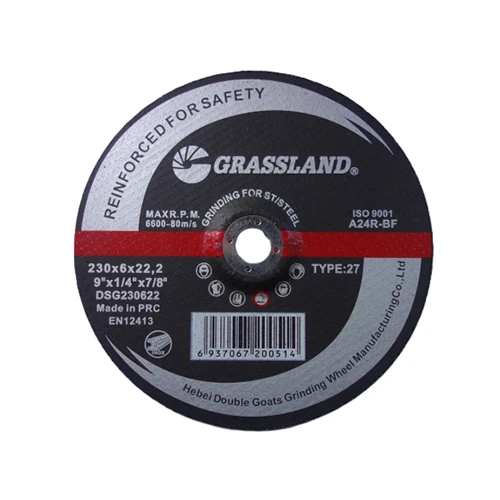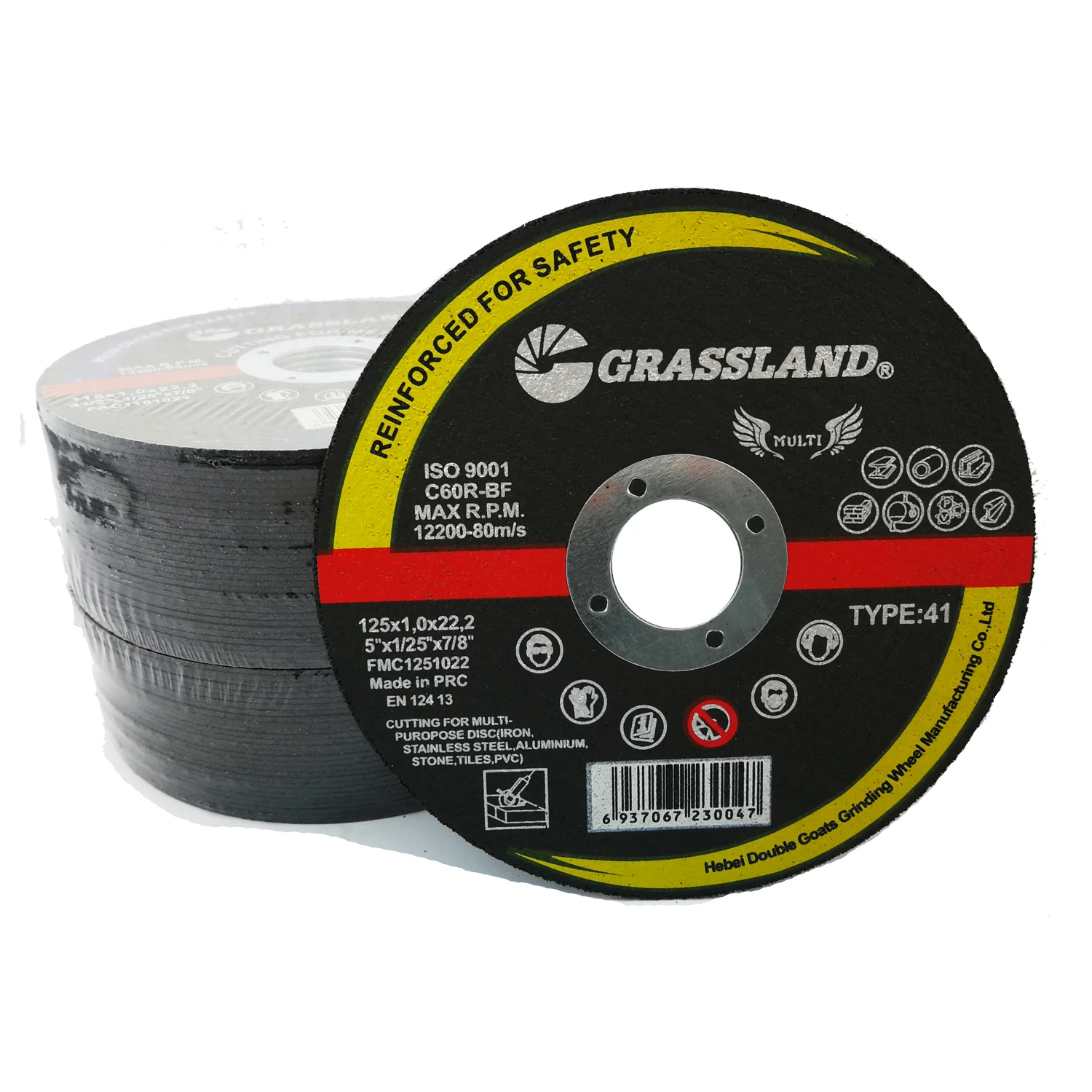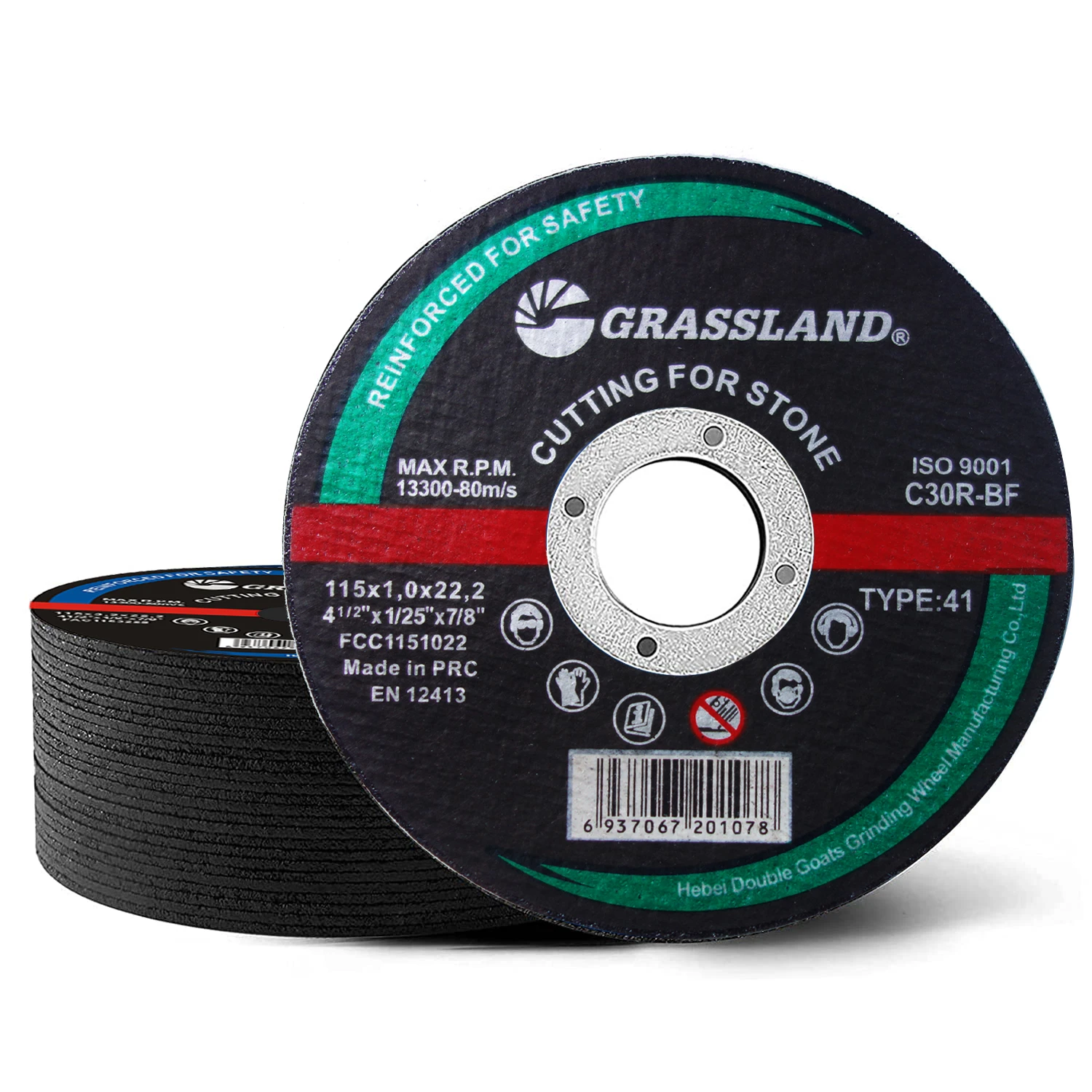When it comes to metal fabrication, automotive work, and construction projects, cutting tools can make or break efficiency. Among the many essential tools found in workshops and on job sites, the angle grinder paired with the right disc remains the go-to solution for fast, clean cuts. However, not all discs are created equal—performance, durability, and application specificity matter. That’s why selecting the ideal disc type for different materials such as sheet metal, steel, cast iron, and using machines like chop saws, is crucial for safety and results.

Versatile Applications Rely Heavily on Angle Grinder Sheet Metal Disc Performance
Working with thin metal sheets requires control and consistency. While powerful, angle grinders can warp or tear through materials without the proper disc. The angle grinder sheet metal disc is designed for flexibility and precision, allowing professionals to cut without bending or distorting the metal. These discs feature a fine grit and reinforced resin bond that stabilizes the wheel during high-speed rotation, offering a clean edge even in tight spaces or intricate shapes.
Engineered to Cut Clean, the Angle Grinder Steel Cutting Disc Excels in Performance
Durability is non-negotiable when it comes to steel. Cutting steel generates heat and friction that can wear out inferior discs quickly, increasing costs and safety risks. The angle grinder steel cutting disc provides enhanced wear resistance and precision balance, making it the preferred choice for structural steel, rebar, and heavy-duty brackets. Using a high-performance disc reduces the chances of burr formation, minimizes spark generation, and improves overall workflow efficiency.
The Angle Grinder Thin Cutting Disc Offers Superior Control for Fine Metal Work
In fabrication tasks requiring fine lines and detailed accuracy, the angle grinder thin cutting disc becomes indispensable. These ultra-thin discs, often measuring just 1.0 mm or less, allow for minimal material loss and high-speed, straight-line cutting. They're particularly effective in artistic metalworking, electrical panel modifications, and cutting pipe or conduit. Their thin profile also leads to less heat distortion and a smoother finish, which reduces post-cut grinding or polishing.
Specialized Projects Require the Strength of a Cast Iron Cutting Wheel
Cutting cast iron is a different beast. Its brittle, dense structure demands a tool with high resistance to cracking and heat. A cast iron cutting wheel is made from reinforced materials like silicon carbide or a combination of aluminum oxide and fiberglass mesh to provide high-impact resistance. It performs excellently on cast iron pipes, machine bases, and engine components where precision and break resistance are vital. The right wheel not only improves cut time but also extends tool life.
Heavy-Duty Tasks Call for a Reliable Chop Saw Cutting Disc That Doesn’t Falter
Industrial environments often rely on chop saws for cutting stock materials in bulk. In such settings, the chop saw cutting disc must handle continuous, repetitive cuts on steel bars, angle iron, and tubing. These discs are generally thicker and made from high-grade abrasives to withstand the downward pressure of chop saw operations. Their consistent cutting ability ensures clean edges without frequent replacement, which is crucial in mass production and time-sensitive jobs.
Material Compatibility and Safety Standards Go Hand-in-Hand
Choosing the right disc involves understanding its compatibility with both the tool and the material. An angle grinder designed for metal may not suit masonry discs, and vice versa. Every disc must comply with ANSI or EN standards to ensure user safety during operation, especially at high RPMs. Poorly matched discs can shatter mid-use, causing injury or damaging the workpiece. That's why industrial-grade discs with labeled specifications and reinforced cores are essential.
Choosing the Right Thickness and Diameter for Each Task
Discs come in various thicknesses and diameters depending on their intended use. For example, thin discs work better for fast, fine cuts, while thicker ones are ideal for heavy-duty or prolonged cutting. The balance between thickness and flexibility determines the efficiency and finish of each cut. Knowing the blade’s diameter is also vital—it must align with the angle grinder or chop saw's specifications to avoid uneven wear or mechanical failure.
Maintenance Tips to Maximize Cutting Disc Lifespan
To ensure maximum efficiency and safety, users should store cutting discs in dry, flat conditions away from direct sunlight or moisture. Regularly inspecting for cracks, edge wear, and binding signs helps prevent accidents. Using discs at the correct angle and avoiding excessive pressure also contributes to longevity. Replacing worn-out wheels immediately keeps operations smooth and reduces the risk of poor cuts or equipment damage.
Cutting Disc Solutions FAQs
Q: Can I use an angle grinder sheet metal disc on aluminum?
A: Yes, but it's essential to use a disc specifically labeled for non-ferrous metals to avoid clogging and overheating. Standard discs for sheet metal work best with mild steel and stainless steel.
Q: How long does an angle grinder steel cutting disc last under heavy use?
A: Longevity depends on the material being cut, disc quality, and cutting technique. A high-grade disc can last through dozens of cuts on standard steel when used correctly.
Q: Are thin cutting discs more prone to breakage?
A: While angle grinder thin cutting discs are more delicate, they’re engineered with high tensile strength to resist breaking. However, improper use or side pressure can increase the risk.
Q: What makes a cast iron cutting wheel different from a general-purpose disc?
A: Cast iron cutting wheels are thicker, reinforced, and designed to handle the brittleness of cast iron, providing crack resistance and clean separation without crumbling the workpiece.
Q: Is it safe to use a chop saw cutting disc on a hand-held angle grinder?
A: No. Chop saw cutting discs are built for stationary tools and lower RPMs. Using them on an angle grinder may result in disc failure due to incompatible speed and pressure handling.
Post time:Aug - 20 - 2025

















